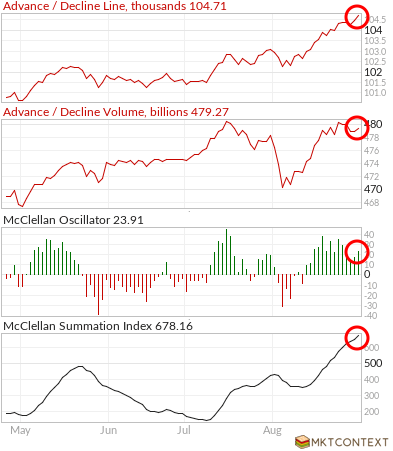Welcome back to MktContext! Improve your portfolio returns by demystifying the economy and timing the stock market.
The choppy, rangebound market continues. So far, our “no recession” call has been accurate and helped us time the bottom of the August dip as shared with our paid subscribers. If you’ve been following our signals, in July we avoided a 7% drawdown in SPX compared to a simple buy-and-hold strategy.
In the premium section, we pick the sectors that will beat the index, and give the inside scoop on hedge fund positioning.
If you aren’t a subscriber yet, do so now to get our free weekly posts.
Today’s topics: Rangebound market, NVDA earnings, unemployment’s DIRTY SECRET finally revealed, which sectors to BUY, hedge fund positioning.
Rangebound market
The choppy, rangebound price action continued this week. As mentioned in Wednesday's letter, this was somewhat expected given the exuberance of buyers over the past several weeks.
Markets frequently go through consolidation periods — Bollinger Band users will recognize this as a “squeeze” — before setting up for the next move. Our put/call ratios are still elevated which means some more purging needs to occur. So we’re patiently waiting for the consolidation to finish.
Despite two major disappointments (SMCI crashed due to short seller allegations, and NVDA’s earnings results) SPX remains firm. This tells us that the market is broadening out to other stocks and sectors and not just led by mega cap tech.
The four breadth indicators below demonstrate this. We like breadth because it tells us if the market is moving in a concerted fashion. And right now, far more stocks are going up than there are going down.
Here’s a great stat from Cubic Analytics. Kudos to them as they’ve been correctly calling the bull market for a long time now:
“Today, there were 166 stocks in the S&P 500 that made new 20-day highs, with 99 stocks making new 50-day highs and 77 stocks making new 52-week highs. Meanwhile, new lows on each of those timeframes were practically non-existent.”
-Cubic Analytics, Aug 30
If you’re enjoying this post so far, like and share with an investor you know!
NVIDIA brighter than appears
The most anticipated event this week, NVDA reported their latest quarterly earnings, and the results were better than many investors are giving them credit for. Even though the company beat earnings and sales estimates, the stock fell 8% in after-hours trading and was down 6% on the day.
The main culprit was a decline in gross margins due to higher costs to ramp up production of their new Blackwell chip. But what’s being missed here is the growth in sovereigns, enterprise, and automotive customers (explained in our X thread — give us a follow!). NVDA’s addressable market continues to expand. Pre-orders rose 48% from last quarter which is a great sign of future growth potential.
From our Wednesday letter, we were looking for the stock to break $130 but didn’t get it. Those of you who bought at a lower price and are still holding it, look to trim more aggressively at this point since the thesis is invalidated.
What does this mean for the broader market? It is NOT true that “where NVDA goes, so goes the market”. Despite being the third largest in the SPX, there have been multiple earnings results where the market went up despite NVDA going down. SPX and QQQ can continue to perform as NVDA works through temporary issues.
QQQ was down only slightly from the prior day. This tells us the market has already purged long positions and is neutral-to-bearish at the moment. We are also monitoring for a potential rotation out of mega cap tech into IWM.
Sponsored message from Money Machine Newsletter
Market beating stocks in 5 min. Picked by elite traders. Delivered weekly to your inbox pre-market. Join for free today.
Secret of unemployment, revealed
The latest batch of economic data provided much-needed clarity on the employment conundrum. Thursday’s weekly jobless claims were steady at 231k. The recent uptick in unemployment was a result of reclassifications, as some individuals who had previously been considered "not in the labor force" are now counted as unemployed.
One such example is a recent graduate. A large number who delayed their graduation due to Covid, are now entering the job market. Another example is illegal immigration, of which there has been an influx. They are classified as “unemployed” even if they find jobs under the table. They increase the unemployment rate, but are not individuals going from employed to unemployed.
This is an important distinction, as past recessions have typically been marked by a rise in permanent job losses and a self-reinforcing cycle of declining incomes and consumption. But that dynamic is simply not playing out this time around. Personal income and spending data released on Friday remain positive.
Then there’s the retirement factor. Since 2010, the ratio of retirees to new workers increased from 1:1 to 3:1. That’s because the baby boomer generation is retiring at a record pace. With fewer people to replace them, that will keep a lid on unemployment. Replacement workers are not counted as new jobs and do not show up in the all-important payroll report, even though people are being hired.
Don’t forget, baby boomers are sitting on record levels of wealth and are now drawing down on those assets, supporting consumption growth in the near future. That’s why preliminary GDP came in on Thursday at a robust 3%. Bottom line, ignore anyone telling you mass unemployment is imminent.
BUY these sectors:
Let’s dive into the technicals of each sector, and why you should invest…
The rest of this article is for paid subscribers. Upgrade now to continue reading the rest:
Sectors to BUY
Hedge fund positioning
Market flows
Claim your free trial by clicking the button below (or reply to this email and we’ll send you a trial directly).
Keep reading with a 7-day free trial
Subscribe to MKTCONTEXT to keep reading this post and get 7 days of free access to the full post archives.








